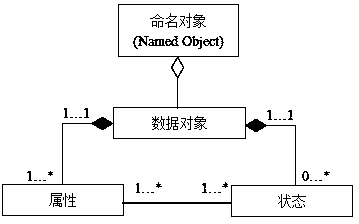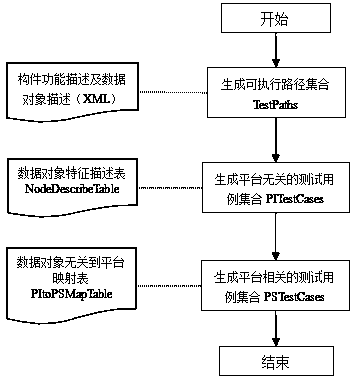Method for generating component testing use cases based on model
A test case generation and test case technology, applied in software testing/debugging and other directions, can solve the problems of high professional technical requirements, complex implementation, low automation and efficiency of users, and achieve easy understanding and use, and process implementation is simple. Effect
- Summary
- Abstract
- Description
- Claims
- Application Information
AI Technical Summary
Problems solved by technology
Method used
Image
Examples
Embodiment
[0061] In the model-based component test case generation method of the present invention, the platform-independent data object meta-model is as attached figure 1 As shown, the platform-dependent data object metamodel is attached figure 2 As shown, the conversion process between platform-independent and platform-dependent data objects is shown in the attached image 3 shown. Its specific implementation process includes the following steps:
[0062] Step 1: Based on the created UML diagram, manually create an XML description document that reflects the functional logic of the component:
[0063] When creating an XML document, use XML tags with clear semantics for translation and description according to each workflow in the corresponding UML diagram. Use predefined label elements to correspond to elements in the description model, including start nodes, end nodes, intermediate nodes, branch nodes, loop nodes, convergence nodes, parallel nodes, etc. Label elements can be defi...
test Embodiment P
[0084] (1) If the collection PITestCases is not empty, obtain a platform-independent test case PiTC, and turn to the next step (2); otherwise, the processing is completed;
[0085] (2) Obtain the first data object in PiTC, query the platform-independent to platform-related data object value mapping table PItoPSMapTable created in step 3, and use its corresponding platform-related state data to describe the characteristics (pre-execution state, input data set and expected output data collection) to replace the data object in PiTC,
[0086] (2) The steps can be described in detail as:
[0087] A) Obtain the first data object in PiTC; if there is no data object to be processed, turn to (3);
[0088] B) Query PItoPSMapTable, obtain its normal value set and abnormal value set, record the number of abnormal values NUM, and only record 1 for the number of normal values;
[0089] C) Copy NUM+1 PiTC backups, replace the first data object in NUM backup PiTCs with NUM outlier data re...
PUM
 Login to View More
Login to View More Abstract
Description
Claims
Application Information
 Login to View More
Login to View More - R&D
- Intellectual Property
- Life Sciences
- Materials
- Tech Scout
- Unparalleled Data Quality
- Higher Quality Content
- 60% Fewer Hallucinations
Browse by: Latest US Patents, China's latest patents, Technical Efficacy Thesaurus, Application Domain, Technology Topic, Popular Technical Reports.
© 2025 PatSnap. All rights reserved.Legal|Privacy policy|Modern Slavery Act Transparency Statement|Sitemap|About US| Contact US: help@patsnap.com



